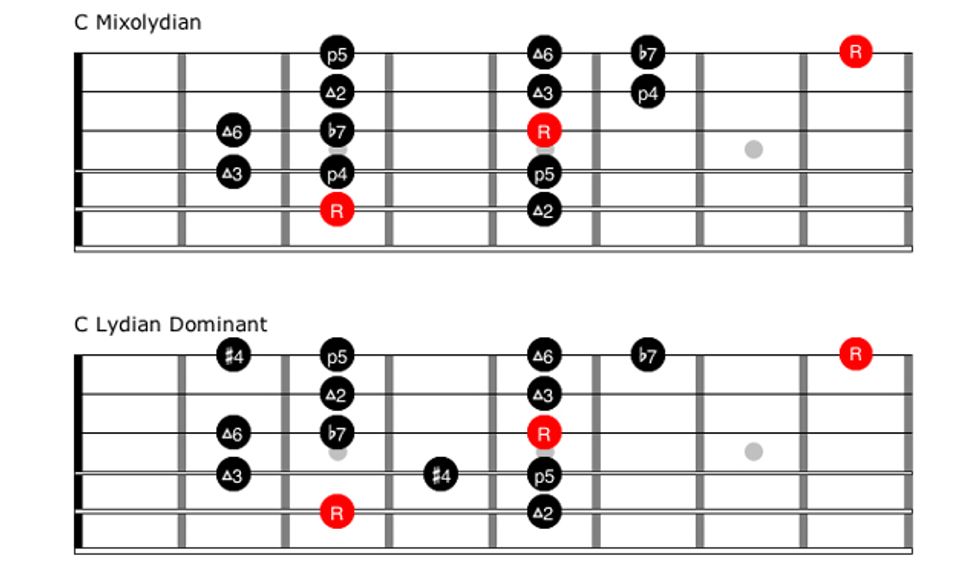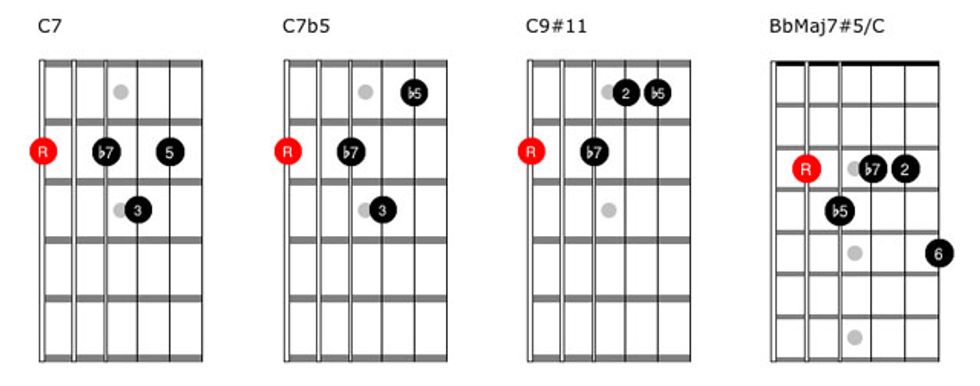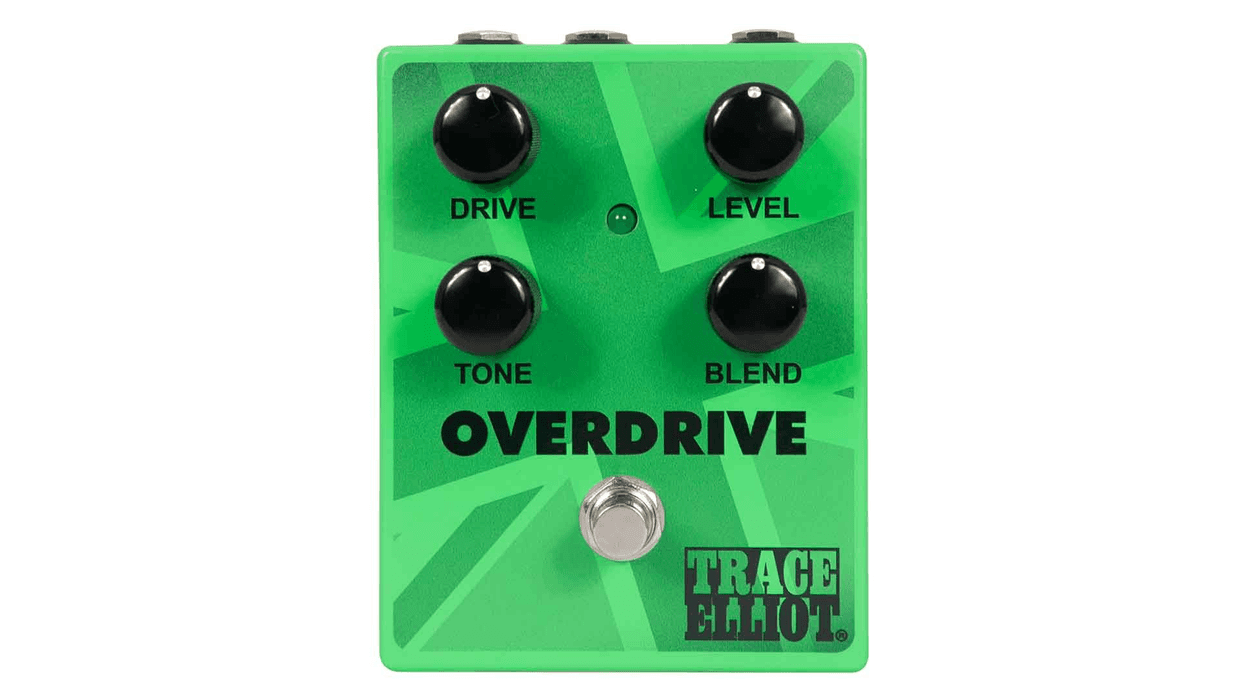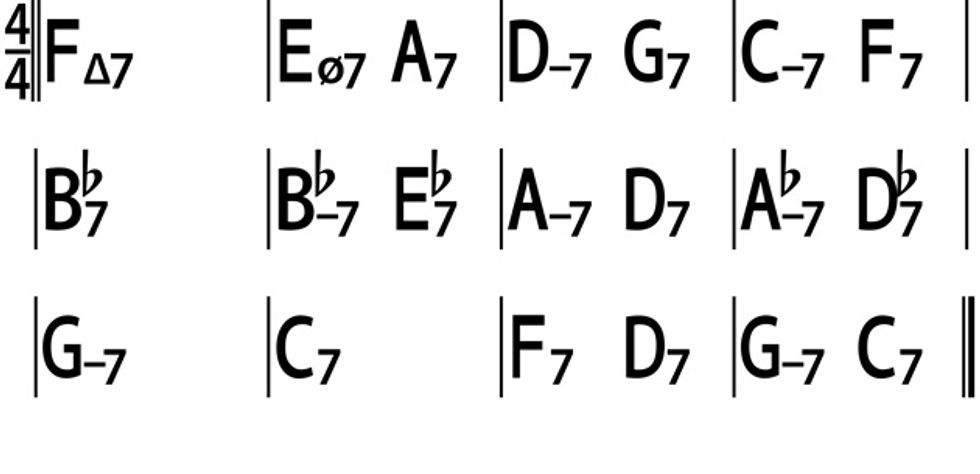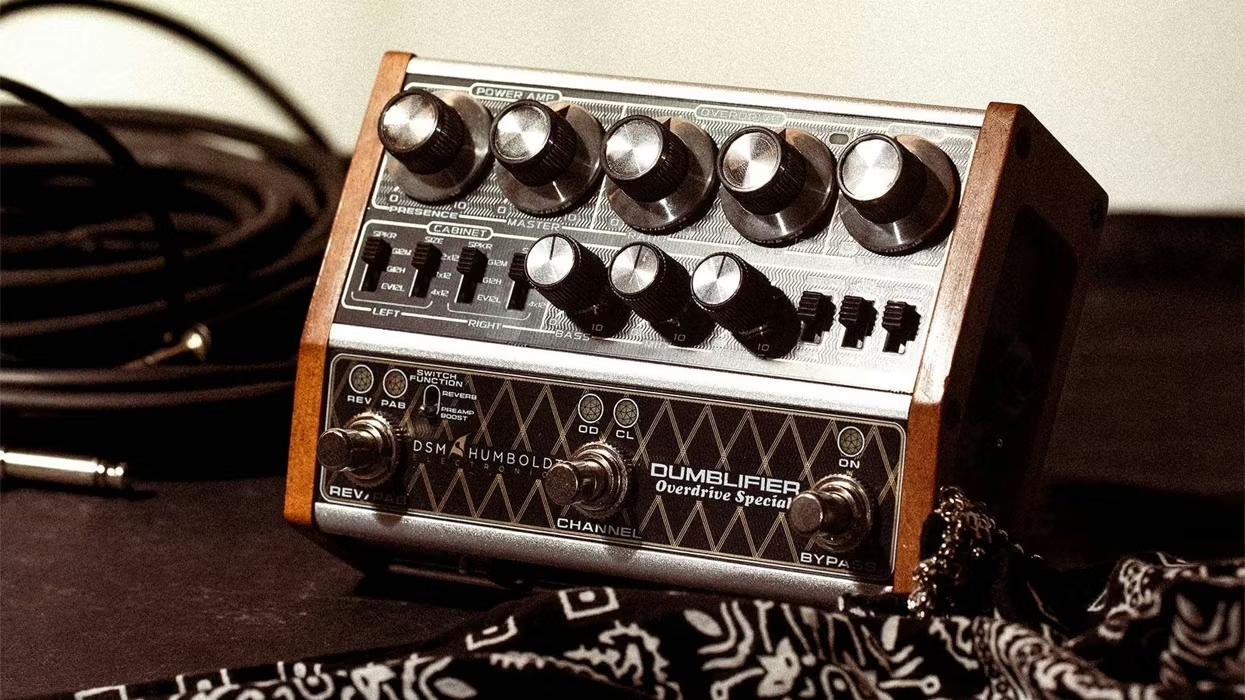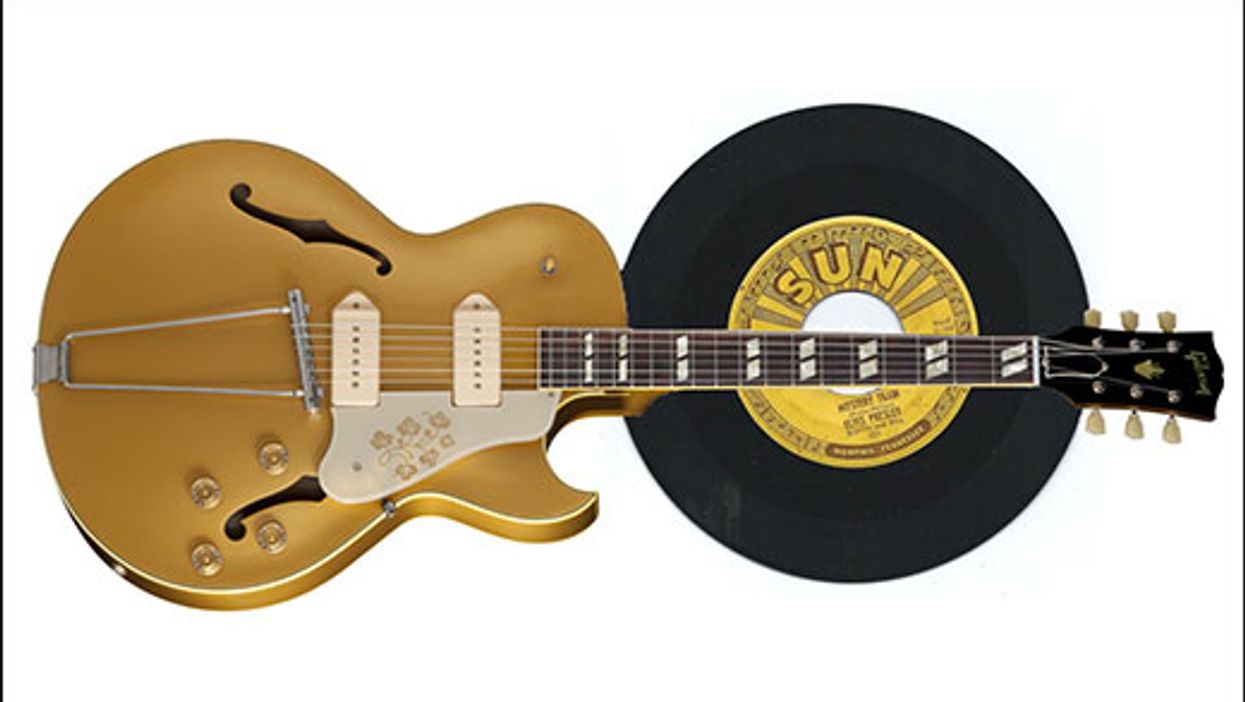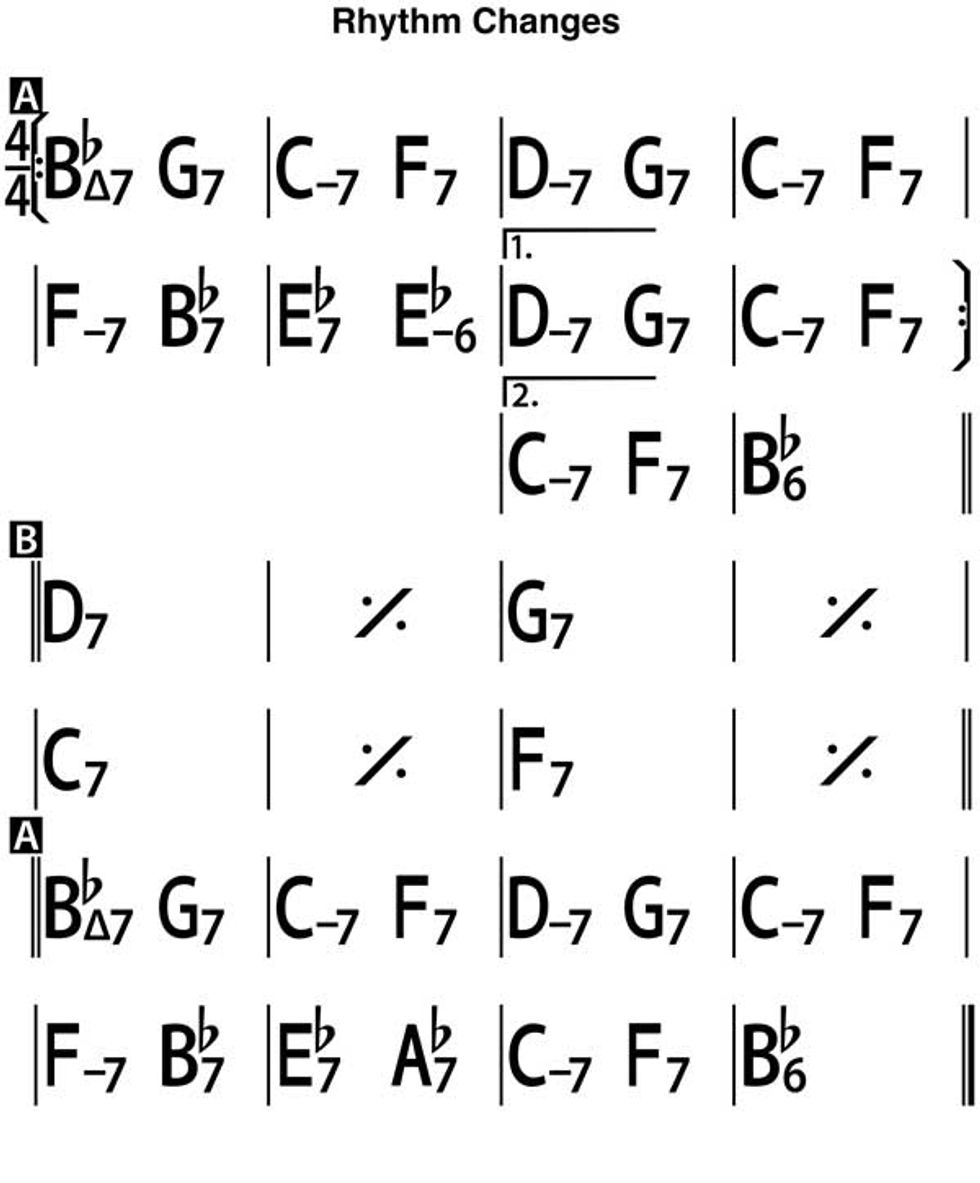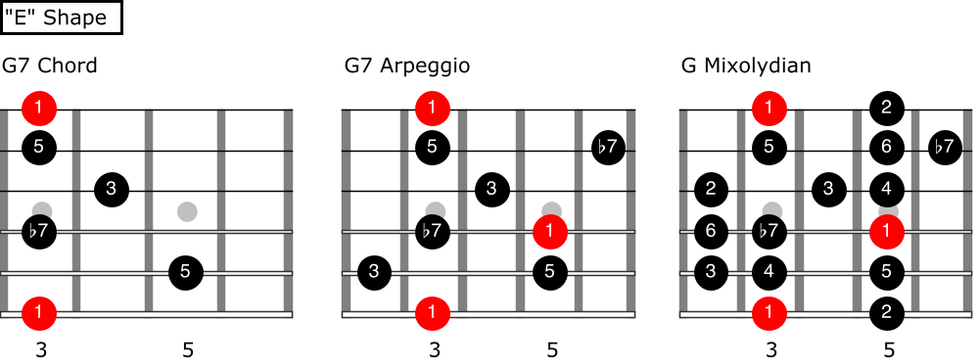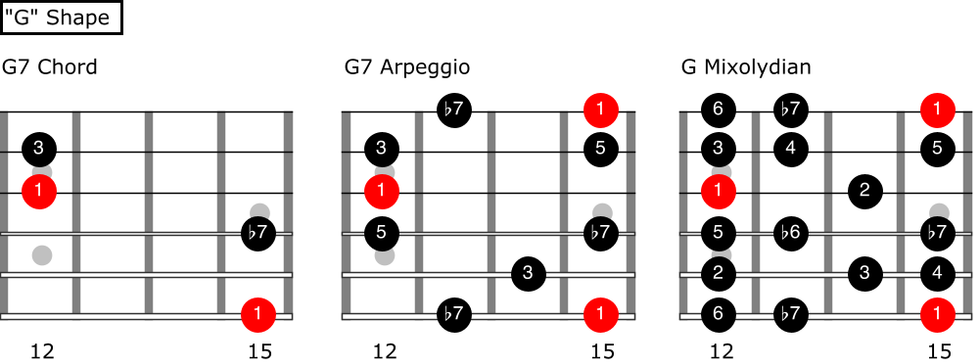Chops: Intermediate
Theory: Intermediate
Lesson Overview:
• Discover how to use the Lydian dominant scale over the I and IV chords.
• Create phrases that focus on the #4 of the scale.
• Develop a sense of extended harmony with chords drawn from the melodic minor scale.
Click here to download MP3s and a printable PDF of this lesson's notation.
There’s no denying the deep roots of the blues, and, of course, the resounding effect blues has had on just about every musical genre that’s come since. From bebop to rock ’n’ roll, country to heavy metal, the blues always has been—and always will be—a huge part of who we are. So whether or not you’re a blues musician, injecting a little blues into your phrases can be good for the soul.
“If you can’t play the blues ... you might as well hang it up.” —jazz legend Dexter Gordon
That said, if you’re an avid blues player, sometimes there’s nothing better than pushing the boundaries of the genre—either to add some new ideas into your blues or just to appreciate the complexity of the genre a bit more.
In this installment of Beyond Blues, I’m going to introduce you to the Lydian dominant tonality and help you quickly bring this flavor to your playing. The Lydian dominant scale (aka Lydian b7) is actually the fourth mode of the melodic minor scale, but to avoid a deep lesson on modal relationships and melodic minor harmony, we’re going to make this really simple and instead adjust something you likely already know.
In Fig. 1, I’ve written out both the C Mixolydian (1–2–3–4–5–6–b7) scale and the C Lydian dominant (1–2–3–#4–5–6–b7) scale in the fourth position of the CAGED system, also known as the “A” shape. As you can see, the only difference between the two scales is the raised 4th degree.
The real important point here is for you to engrain the sound of each of these scales over a dominant 7 chord. For your reference, I have recorded two audio examples over the I and IV chords of a blues, first opting for a Mixolydian scale, then the Lydian dominant. Listen closely to each and try to describe how the sound of each solo makes you feel.
To my ears, the Lydian dominant scale has a quirky, yet mysterious sound, and resting on that #4 can really create a sense of excitement and exploration. It’s the sort of sound you’d expect to hear from players like Larry Carlton, John Scofield, and Scott Henderson more than, say, B.B. King or Jeff Beck.
You can think of it as simply a color from a different palette. To help visualize this scale all over the neck, I have included diagrams for all the CAGED positions as well.
In Fig. 2, I’ve written out some chord voicings for you to play around with. When I’m improvising, everything is harmony. While technically the Lydian dominant scale creates a 13#11 sound, if you wait for that chord to use this scale, you’ll be waiting a while. And when it does come along, the scale won’t sound “outside”—it will just sound “inside” on an admittedly unusual chord.
The idea here is for you to play these chords and familiarize yourself with their sound, since this is the sound you’ll create when playing the Lydian dominant scale over a regular dominant 7 chord. While the C9#11 doesn’t actually contain the 3rd, this perfectly highlights the sound of the scale to my ear.
Our first lick (Fig. 3) works well over an extended dominant 7 chord vamp, and while the first measure contains both the 4 and #4, we anticipate the second measure by resting on the #4 and playing around with a little fragment I’m fond of in this position. The line then moves up a dominant 7 arpeggio and lands in real blues territory with a classic little minor-pentatonic cliché. For the audio I’ve played this starting in the second measure of the blues form.
For our second lick (Fig. 4), we have a similar approach to the previous example. We begin with a typical country influenced Mixolydian idea in measure one, and then highlight the #4 leading into the second measure. We follow that with a series of descending triads taken from C Lydian dominant and move them down the neck before resolving. As with Fig. 1, for the audio I placed this over the I chord, starting in the second measure.
Our final lick (Fig. 5) will take you nicely from the I to the IV before resolving on the I. This is a very common approach from players like Robben Ford or Larry Carlton, treating the I chord as a dominant, then the IV as a non-functioning V7 chord and using the Lydian dominant. So to tackle this you’ll need to transpose our Lydian dominant patterns to F. This highlights the use of the CAGED system where each of our scale patterns fits around a parental chord form.
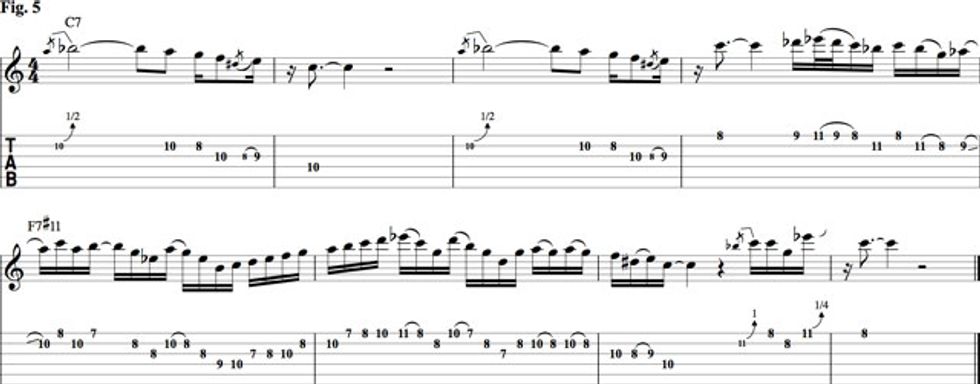
For your own practice benefit, I’ve included an eight-minute backing track, which just loops the first eight measures of a 12-bar blues progression. This should be the perfect platform for experimenting with these new sounds without having to worry about all the chord changes you might expect in bars 9-12 of a blues.
Hopefully this lesson has helped expand your tonal palette and has left you hungry to experiment. Remember, music is your journey, but you have to enjoy the ride as much as reaching the destination.
 Levi Clay is a London-based guitar player, teacher, and transcriber. His unique approach to learning keeps him in constant demand from students the world over, and his expertise as a transcriber has introduced his work to a whole new audience. For more information, check out www.leviclay.com.
Levi Clay is a London-based guitar player, teacher, and transcriber. His unique approach to learning keeps him in constant demand from students the world over, and his expertise as a transcriber has introduced his work to a whole new audience. For more information, check out www.leviclay.com.

